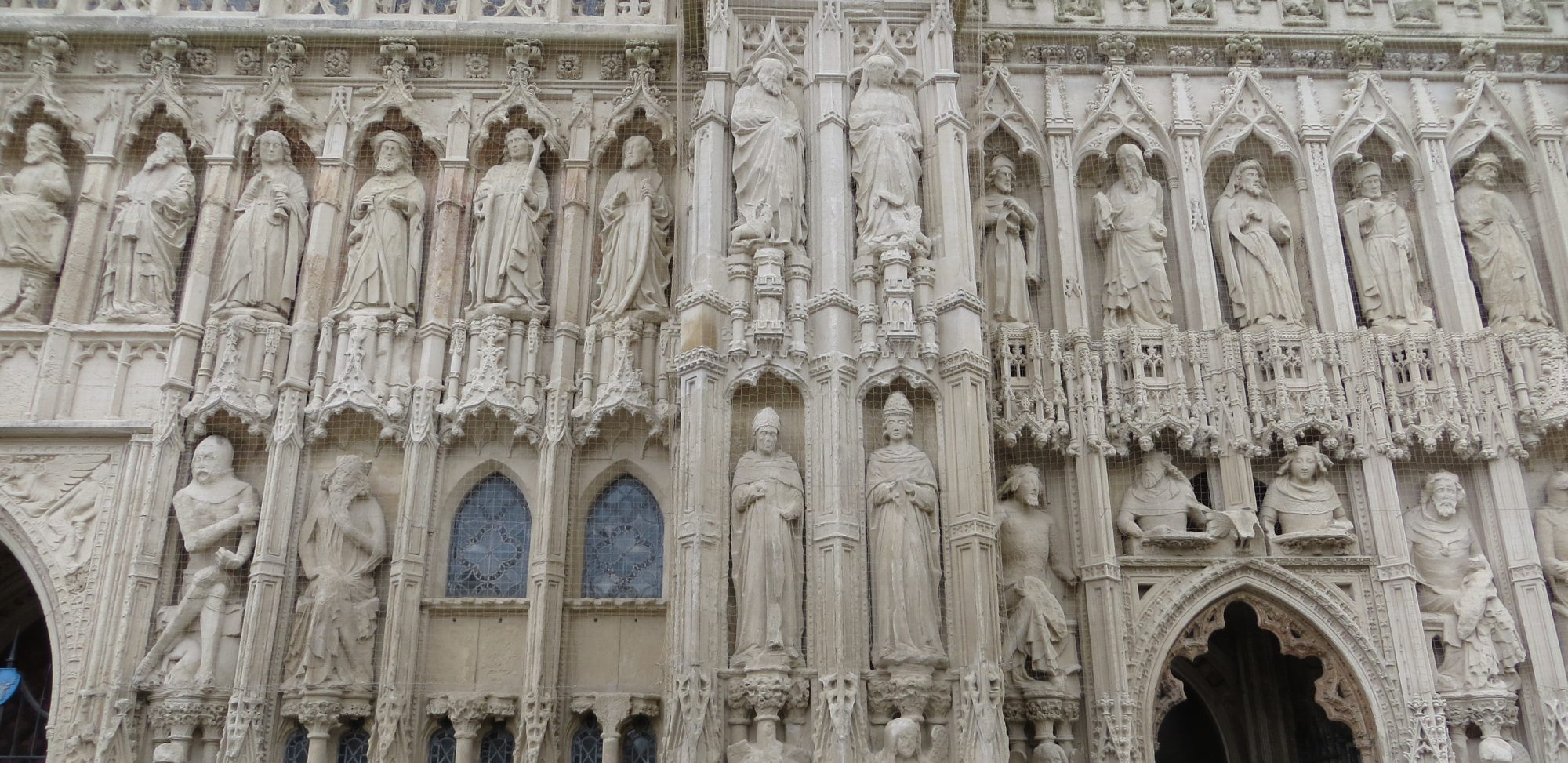John 1.29-42
The next day he saw Jesus coming towards him and declared, ‘Here is the Lamb of God who takes away the sin of the world! 30This is he of whom I said, “After me comes a man who ranks ahead of me because he was before me.” 31I myself did not know him; but I came baptizing with water for this reason, that he might be revealed to Israel.’ 32And John testified, ‘I saw the Spirit descending from heaven like a dove, and it remained on him. 33I myself did not know him, but the one who sent me to baptize with water said to me, “He on whom you see the Spirit descend and remain is the one who baptizes with the Holy Spirit.” 34And I myself have seen and have testified that this is the Son of God.’
35 The next day John again was standing with two of his disciples, 36and as he watched Jesus walk by, he exclaimed, ‘Look, here is the Lamb of God!’ 37The two disciples heard him say this, and they followed Jesus. 38When Jesus turned and saw them following, he said to them, ‘What are you looking for?’ They said to him, ‘Rabbi’ (which translated means Teacher), ‘where are you staying?’ 39He said to them, ‘Come and see.’ They came and saw where he was staying, and they remained with him that day. It was about four o’clock in the afternoon. 40One of the two who heard John speak and followed him was Andrew, Simon Peter’s brother.41He first found his brother Simon and said to him, ‘We have found the Messiah’ (which is translated Anointed). 42He brought Simon to Jesus, who looked at him and said, ‘You are Simon son of John. You are to be called Cephas’ (which is translated Peter).
I saw the Spirit descending from heaven like a dove and it remained on him…
The Lamb of God
Jesus tells us that he is the Lamb of God. He is Agnus Dei, qui tollit peccata mundi – the lamb who bears away the sins of the world.
The Lamb is the token of God and of Israel. He stands for both them together. He is able to go freely between heaven and earth. His coming and going is seen in the sacrifice of lambs made at Passover. The Passover sacrifice is the sign of the founding event in which Israel is taken out of Israel. The lamb is the Lord entering the people of Israel, and through the lamb, as though he were the passage and escape route that opens up before them. He provides the food supply by which sustains them as they do so, for he himself is that food supply.
God takes away the sin of the world. The lamb turns himself into fire in order to take our sins back with him to heaven, returning these broken parts to the whole, so that they may become part of the whole again and so be redeemed.
In Israel’s Law, sins were formally loaded on two oxen and dragged out of the city. Also once a year they were notionally packed onto two goats, one of which was driven far away into the desert from it would not return.
A lamb is an emblem of innocence and sinlessness; the idea is that the creature without any sin or other encumbrance of its own, has no limits on its strength and so is able to pull weights that no creature encumbered by sin can pull. The lamb is not constrained by any sins of his own, so his energy is limitless.
Jesus is the innocent and thus limitlessly powerful draught animal who can take our sins so far away that we will be finally free of them. In daily life all human refuse and waste is dumped just outside. It takes a very well-organised society to dedicate the resources – draught animals – to take that waste far enough away that it will not pollute the water supply on which that settlement depends
The Lamb takes away the sin of the world by returning to heaven, taking with it whatever we load onto it. By fire the lamb returns to heaven. The lamb turns himself into fire in order to take our burdens back with it to heaven, returning these broken parts to the whole. In daily life all human refuse and waste is dumped just outside the settlement. It takes a well-organised society to dedicate the draught animals of taking that waste far enough away that it will not pollute the water supply on which that settlement depends. In Israel’s Law, sins were formally loaded on two oxen and dragged out of the city, and also once a year they were notionally packed onto goats, one of which was driven far away into the desert from it would not return. A lamb is an emblem of innocence and sinlessness; the idea is that the creature without any sin or other encumbrance of its own, has no limits on its strength and so is able to pull weights that no creature encumbered by sin can pull. Jesus is the innocent, and thus limitlessly powerful, draught animal who can drag our sins far enough away that we will be free of them.
